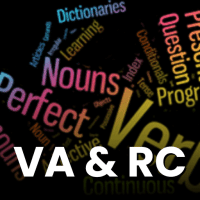Verbal Exam > Verbal Questions > Q. The sun __________ in the east. (rise)a)Is...
Start Learning for Free
Q. The sun __________ in the east. (rise)
- a)Is rising
- b)Rise
- c)Rises
- d)None of these
Correct answer is option 'C'. Can you explain this answer?
Verified Answer
Q. The sun __________ in the east. (rise)a)Is risingb)Risec)Risesd)Non...
"Rises" Is the correct answer.
Rule: As it is the universal truth, rises is used. But at the same time, sun is singular noun, and so the singular verb rises is used.
Rule: As it is the universal truth, rises is used. But at the same time, sun is singular noun, and so the singular verb rises is used.
Most Upvoted Answer
Q. The sun __________ in the east. (rise)a)Is risingb)Risec)Risesd)Non...
Answer:
Introduction:
The given sentence is in the simple present tense and talks about a regular or habitual action. In this sentence, we have to fill in the blank with the correct form of the verb 'rise' which will indicate the present tense and agree with the subject 'sun'.
Explanation:
The verb 'rise' is an irregular verb, and its forms in the present tense are:
- I/You/We/They rise
- He/She/It rises
As the subject 'sun' is third-person singular, we will use the form 'rises' to agree with it. Therefore, the correct answer is option 'C' - Rises.
Usage of present simple tense:
The present simple tense is used to describe actions that are habitual, factual, or general truths. It is also used to describe scheduled events in the future and in some conditional sentences. In this sentence, the present simple tense is used to describe a habitual action of the sun rising in the east every day.
Conclusion:
In conclusion, the correct form of the verb to be used in the given sentence is 'rises' as it agrees with the subject 'sun' and indicates the present tense. The present simple tense is used to describe habitual actions, and in this sentence, it describes the regular action of the sun rising in the east.
Introduction:
The given sentence is in the simple present tense and talks about a regular or habitual action. In this sentence, we have to fill in the blank with the correct form of the verb 'rise' which will indicate the present tense and agree with the subject 'sun'.
Explanation:
The verb 'rise' is an irregular verb, and its forms in the present tense are:
- I/You/We/They rise
- He/She/It rises
As the subject 'sun' is third-person singular, we will use the form 'rises' to agree with it. Therefore, the correct answer is option 'C' - Rises.
Usage of present simple tense:
The present simple tense is used to describe actions that are habitual, factual, or general truths. It is also used to describe scheduled events in the future and in some conditional sentences. In this sentence, the present simple tense is used to describe a habitual action of the sun rising in the east every day.
Conclusion:
In conclusion, the correct form of the verb to be used in the given sentence is 'rises' as it agrees with the subject 'sun' and indicates the present tense. The present simple tense is used to describe habitual actions, and in this sentence, it describes the regular action of the sun rising in the east.
Free Test
FREE
| Start Free Test |
Community Answer
Q. The sun __________ in the east. (rise)a)Is risingb)Risec)Risesd)Non...
What is preasent simple

|
Explore Courses for Verbal exam
|

|
Question Description
Q. The sun __________ in the east. (rise)a)Is risingb)Risec)Risesd)None of theseCorrect answer is option 'C'. Can you explain this answer? for Verbal 2025 is part of Verbal preparation. The Question and answers have been prepared according to the Verbal exam syllabus. Information about Q. The sun __________ in the east. (rise)a)Is risingb)Risec)Risesd)None of theseCorrect answer is option 'C'. Can you explain this answer? covers all topics & solutions for Verbal 2025 Exam. Find important definitions, questions, meanings, examples, exercises and tests below for Q. The sun __________ in the east. (rise)a)Is risingb)Risec)Risesd)None of theseCorrect answer is option 'C'. Can you explain this answer?.
Q. The sun __________ in the east. (rise)a)Is risingb)Risec)Risesd)None of theseCorrect answer is option 'C'. Can you explain this answer? for Verbal 2025 is part of Verbal preparation. The Question and answers have been prepared according to the Verbal exam syllabus. Information about Q. The sun __________ in the east. (rise)a)Is risingb)Risec)Risesd)None of theseCorrect answer is option 'C'. Can you explain this answer? covers all topics & solutions for Verbal 2025 Exam. Find important definitions, questions, meanings, examples, exercises and tests below for Q. The sun __________ in the east. (rise)a)Is risingb)Risec)Risesd)None of theseCorrect answer is option 'C'. Can you explain this answer?.
Solutions for Q. The sun __________ in the east. (rise)a)Is risingb)Risec)Risesd)None of theseCorrect answer is option 'C'. Can you explain this answer? in English & in Hindi are available as part of our courses for Verbal.
Download more important topics, notes, lectures and mock test series for Verbal Exam by signing up for free.
Here you can find the meaning of Q. The sun __________ in the east. (rise)a)Is risingb)Risec)Risesd)None of theseCorrect answer is option 'C'. Can you explain this answer? defined & explained in the simplest way possible. Besides giving the explanation of
Q. The sun __________ in the east. (rise)a)Is risingb)Risec)Risesd)None of theseCorrect answer is option 'C'. Can you explain this answer?, a detailed solution for Q. The sun __________ in the east. (rise)a)Is risingb)Risec)Risesd)None of theseCorrect answer is option 'C'. Can you explain this answer? has been provided alongside types of Q. The sun __________ in the east. (rise)a)Is risingb)Risec)Risesd)None of theseCorrect answer is option 'C'. Can you explain this answer? theory, EduRev gives you an
ample number of questions to practice Q. The sun __________ in the east. (rise)a)Is risingb)Risec)Risesd)None of theseCorrect answer is option 'C'. Can you explain this answer? tests, examples and also practice Verbal tests.

|
Explore Courses for Verbal exam
|

|
Signup for Free!
Signup to see your scores go up within 7 days! Learn & Practice with 1000+ FREE Notes, Videos & Tests.























